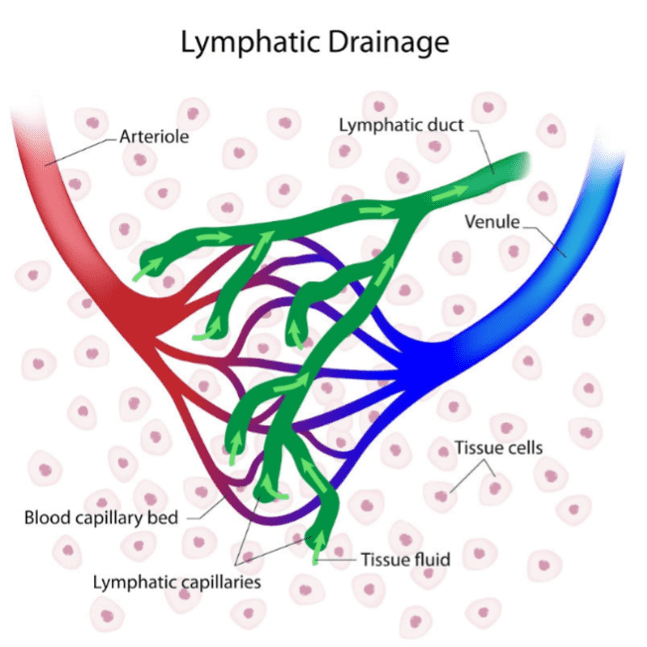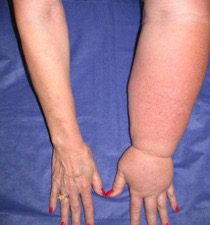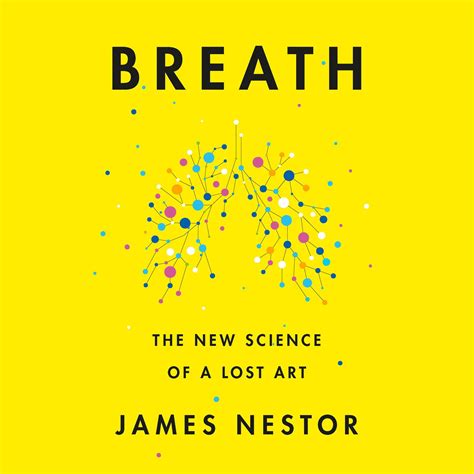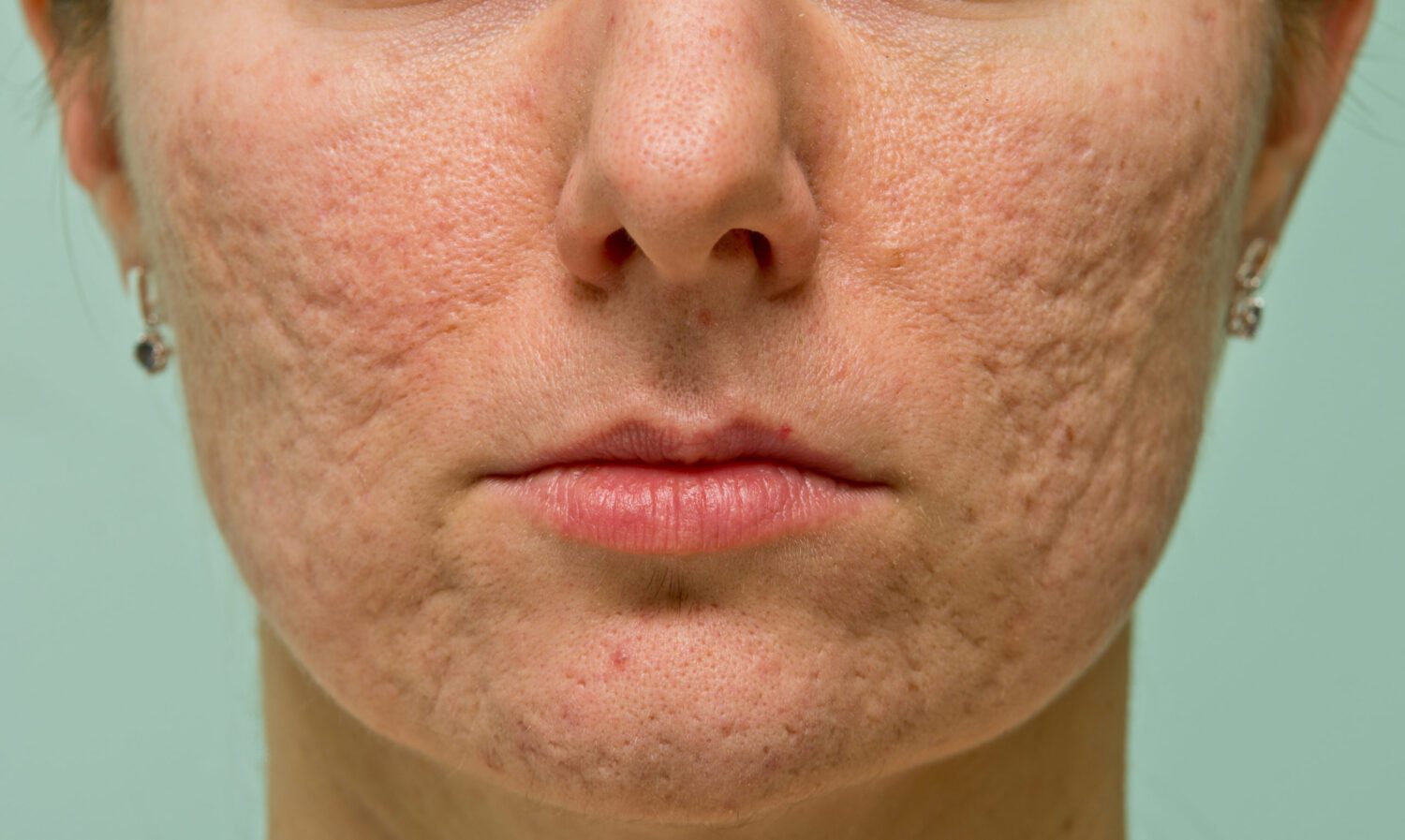Why Our Neglected Lymph System Is A Key To Optimal Health
Mary is a spry 78-year-old woman with her right arm significantly larger than her left. Several years ago, she was diagnosed with breast cancer. The surgeon removed her breast, along with most of the lymph nodes in her right axilla (armpit). Since that time, she has had swelling of the right arm, which bothers her, especially at night.
You Have TWO Circulatory Systems
Most people don’t know that they have two separate circulatory systems in the body. The blood system is a closed system that keeps the red blood cells, and most proteins, inside at all times. This allows only the plasma to leak into the tissues and around cells bringing nutrients such as sugar, oxygen, vitamins and minerals – everything a growing cell needs. However, while most of the fluid is taken up into the veins after it feeds the cells, a significant portion is left behind. This fluid builds up over time and can create a lot of swelling. To get that fluid back into the circulation, the body has a separate system of vessels – twice as many as the blood vessels – called the lymphatic system.[1]
The lymphatic system has three functions:
- To bring fluid from around the cells back to the blood circulation
- To remove bacteria, viruses and other infections, and cancer
- To remove waste from the cells
Mary’s discomfort came because when the surgeon removed the lymph nodes it cut off the lymph vessels. Now her lymph system can no longer bring the excess fluid back to the heart so her arm gets bigger as the fluid increases.
The primary function of the lymph system is to drain excess fluid from around the cells. This amounts to about 15% of all the fluid that comes out of the blood to bathe the cells. As we move around, the lymph vessels push this fluid through one-way valves towards the heart. Here the fluid enters the veins and ends up back into blood circulation. Amazingly, the vessels themselves also have muscles that contract and push the lymph through the vessels.
Mary needs to wear a pressure sleeve to keep her arm from continuously getting larger. The extra pressure squeezes the fluid into the venous system to get back into the circulation. This doesn’t get all the fluid back, but it keeps her arm from becoming gigantic.
Lymphedema after left mastectomy with removal of lymph nodes.[2]
Moreover, the lymph system cleans out the excess waste from cells. Since the blood vessels only take up dissolved fluids and salts, the lymph system must take care of the larger molecules and debris left behind. The lymph vessels are very porous, allowing proteins, bacteria, viruses, cancer cells and cell parts to get into the lymph. Macrophages in the lymph nodes engulf and digest waste to be recycled. (The lymph system is very environmentally friendly!) Also, larger nutrients, like fat from our intestines, cannot get into the blood vessels so the lymph systems pick them up an deposits them directly into circulation – without going through the liver first!
The lymph system takes up the constituents of blood such as proteins and minerals, but by far the most important part is fats. Most of the fats from the diet end up in the lymph system and are dumped directly into the blood.
Identify Lymphatic Issues
Now that you know what the lymphatic system is, and what it does, you can guess what will happen if it isn’t functioning well. Some of the problems associated with a poorly functioning lymphatic system include:
- Edema, or swelling
- Regional pain syndromes
- Toxic overload, including heavy metals
- Poor digestion
- Weight gain
- Headaches
- Rashes and skin problems
- Frequent infections, colds/flu or skin infections
- Cancer, especially lymphoma or Hodgkin’s Disease
How to Care For Your Lymphatic System
1. Exercise
Body movement is an essential ingredient to getting your lymph moving. Muscles in the lymphatic vessels help the lymph move along. But walking, running and using your muslces causes the majoriy of all lymph flow. Breathing is also important because when you suck in air, you also suck lymph into your heart. (Maybe this solves the mystery of a sigh?) So, regular deep breathing not only helps you get more oxygen, it assists in lymphatic detoxification of your body.
2. Sweat
One way to assist the lymph system is by sweating. Many people sit in a sauna, steam room, or sweat box to open their pores and let out toxins. However, this is not always necessary. While movement itself helps the lymph to flow, exercising to sweat also helps remove toxins. Thus, you can “kill two birds with one stone” by doing regular exercise – enough to sweat.
3. Intestinal cleanse
The intestines need time to repair, which happens when we aren’t using them. Almost every “cleanse” program is a modified fast of some kind. Some restrict you to “lemonade” for thirty days, such as the “master cleanse.” Others use herbal teas, juice, water or broth. It has been shown that fasting shuts down the lymphatic system in the intestines and rebuilds it in 3 days. Thus, I usually recommend at least a 4-day cleanse once per year.[3]
4. Detox
The liver is the most important organ for detoxification. Remember, everything from our intestines (that isn’t in the lymph system) goes through the liver first. The liver makes a lot of lymph as well. A good detox program gives the liver what it needs. This includes vitamins, minerals, amino acids, and anti-oxidants, so the liver can continuously remove toxins from your body. Optimally, this is done on a regular basis by eating nutritious foods.
We often consider toxins to come from factories and ground water. BUT, we forget that 99% of the toxins come from our own cells as they make energy, proteins, and other metabolic processes. The importance of the lymphatic system is to drain these out. We can overload the system by taking in excessive foods such as processed foods, and chemical foods.
5. Good nutrition
Many think they are going to get healthy by taking a magic pill, but we know in our heads that this doesn’t happen. Good nutrition is about choosing good food, including things we may not like. Not that we have to eat broccoli all the time, but occasionally it is highly nutritious.
Supplements are often given for lymphatic detox. These may be helpful on a temporary or occasional basis, but they do not take the place of good nutrition from food. Good nutrition keeps the oxidative damage to a minimum, and helps the immune system to function well, which is all part of the lymphatic system.
6. Acupuncture
In patients with edema because their lymph nodes were removed, acupuncture worked twice as well as a diuretic.[4 The acupuncture needles may stimulate the lymph vessels to function. As they function more, they create new vessels, even after multiple lymph nodes were removed. Surgical removal of lymph nodes cuts off the lymph vessels that supply them causing chronic edema. Increasing lymph flow allows new vessels to grow, improving lymphatic drainage.
7. Massage
A massage therapist who is expert in the lymphatic system can help lymphatic circulation. Chronic tension in the muscles can block circulation of lymph and cause swelling and pain. Also, there is a specific type of gentle massage that induces lymphatic flow. This is important for those who are blocked by cancer, infections, or inflammation.[5] Lymphatic massage is light touch to the skin. This light touch stimulates the lymphatic vessels to contract, increasing flow through the system. Deep massage can also help, but for other reasons. Relaxing the muscles helps open up the lymphatic flow.
To be sure, there is nothing magical about the stones. You can get them made out of rose quartz, jade or other stones – or even plastic. I suspect they work either way for their intended use.
8. Dry Brush Massage
This is a light, gentle-touch massage with a brush to stimulate the lymph system in the skin. Use a natural bristle brush to brush along the top of the skin towards the heart. This causes the lymph vessels to contract, moving the lymph along. Dry bushing can be a daily detox. It is a simple technique, easily learned, and done at home, as explained by a video by one of my colleagues in Santa Barbara: https://youtu.be/kqKPaG0gAnk
I have had patients practice lymphatic draining for congestion in the breast. This effectively removed lumps in the breast that were thought to be breast cancer,
8. Hot Stones
Some are using hot stones placed on the body or as massage instruments to help lymph drainage. The stones are heated to about 130 degrees to warm the skin prior to a massage. The warmth may increase circulation because it dilates blood vessels. However, there is nothing magical about rocks, this warmth can be done with an infrared heater, warm oil, warm bath, or other heating device. The rocks do feel good, though, I think it is the weight of them (they are only a couple of inches in diameter).
10. Breathing
Since the lymph system has no pump, the flow must be created in other ways. One way is to breathe. If a person breathes in short, shallow breaths, there is little pressure created to move the lymph through the vessels. This specifically applies to the lymph from the intestines that is taking in all the fat you just ate. It needs to be dumped into the circulation, which happens as you breathe. Deep breathing helps the blood flow even more than exercise![6 The combination of exercise and deep breathing is excellent. Generally, using your full lung capacity is the best. Take slower and deeper breaths. It takes practice because we are not used to thinking about our breathing.
Several traditional and new programs have emerged for breathing. Yoga encourages using more of your lung capacity, as to many of the breathing techniques for singing. A newer course is the WIM HOF method, found at https://www.wimhofmethod.com/
There also are some great breathing techniques in the book: BREATH by James Nestor.
Your Thyroid Might Be a Clue
Eighty percent of those with lymphedema were low in thyroid.[7] Thyroid hormone is important to get things moving, including the lymph vessels. Since the circulation of the lymph is dependent on movement, including contractions of the lymph vessels, lack of thyroid hormone causes it to be sluggish too.[8] If you notice swelling of your skin, you may want to have your thyroid checked.
Notice the punctate holes in the cheek. This is edema in the outer layers of skin, which may indicate poor lymph flow from thyroid. The best way to deal with this is not from the outside, like massage, but rather by fixing the thyroid hormone imbalance.
Even though the lymphatic system is twice as big as the blood circulation, it is often left out of the discussion on health. But this collection of vessels is extremely important for removing toxins from around all the cells of your body, as well as preventing infections and cancer. If you take care of your lymph system, it will take good care of you by protecting and defending your body.
CHECKLIST for Lymphatic Health:
- Eat a high-fiber diet so you don’t dump too much fat into the lymph system and cause inflammation.
- Exercise at least 3 days per week with HIIT (enough to sweat) to clean out the lymph.
- Fix low thyroid problems so the lymph system isn’t sluggish.
- Breathe deeply to get the lymph back into circulation.
- Massage, including deep, light touch, hot stones, and dry brush can all be helpful, especially when you have a lot of stress.
- Fast with water or plain herbal teas (cinnamon, ginger, licorice, chamomile) four days once each year to reset, and rebuild the intestinal lymphatic system.
The lymph system is really important! As you will notice, the recommendations for keeping a good functioning lymphatic system is the same for keeping good health. So, take care of your lymphatic system and you will have good general health.




























